Learn more about:
Hitting the target
For the most consistent absorption, insulin needs to be injected into the subcutaneous tissue layer—the fatty layer under your skin.
If the needle goes too deep, it will inject into your muscle; this may cause your insulin to be absorbed too quickly. This can cause unpredictable blood sugar lows and highs.
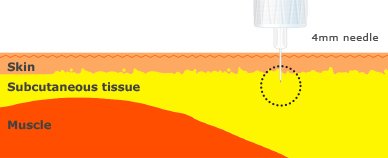
Because the average skin thickness across the four most common injection sites (abdomen, thighs, buttocks and arms) is just an average of 2 mm, using a shorter needle reduces your risk of injecting into muscle.1

The BD Nano™ 4mm Pen Needle delivers injections to the subcutaneous tissue over 99.5% of the time.1
Watch more
What does the BD Nano™ 4mm Pen Needle look like?
When you inject with the BD Nano™ 4mm Pen Needle, what happens beneath your skin?
Why should I avoid injecting into a muscle?
Easier injection for all body types
Because it’s so small, you don’t need to use a “pinch-up” technique when you inject with a BD Nano™ 4mm Pen Needle.† You can inject at 90 degrees, using just one hand, at all injection sites—which makes it easier to reach more injection sites, like the abdomen, upper buttocks and outer thighs, for proper rotation.
And the BD Nano™ 4mm Pen Needle is suitable for people of all body types—from children to adults with high BMI.1,2,3
† Small children and extremely lean people with diabetes may require a “pinch-up.”
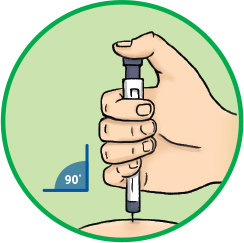
Watch more
Does the BD Nano™ 4mm Pen Needle work for all body types?
What are the benefits of a no-pinch injection?
Injection technique tips





Watch more
Why should I rotate injection sites?
The facts about lipos—and how to avoid them
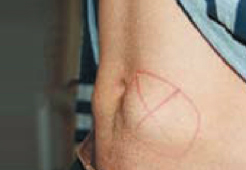
Lipohypertrophy — or lipos — are thickened hard or rubbery lumps that build up under your skin when you use the same site over and over to inject your insulin. Sometimes you can see them, but you may also need to press your injection sites to feel them under your skin. Lipos don’t look very nice, and injecting into them can prevent your insulin from working the way it’s supposed to.2
But with every injection,
two small steps can make a real difference:


Replace your needle
Rotate injection sites
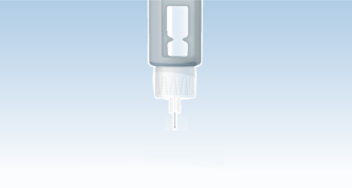
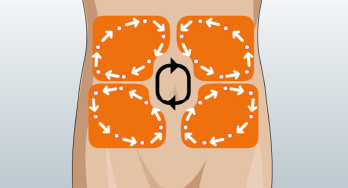
Not only does this reduce your risk of developing lipos, it also reduces your risk of the needle breaking in your skin, clogging and not giving you your correct dose.2
Divide each area into large zones (about the size of a postcard), and move over 1 finger-width for each injection. When that postcard-sized zone is fully used, move on to the next.2
PentaPoint™ Comfort
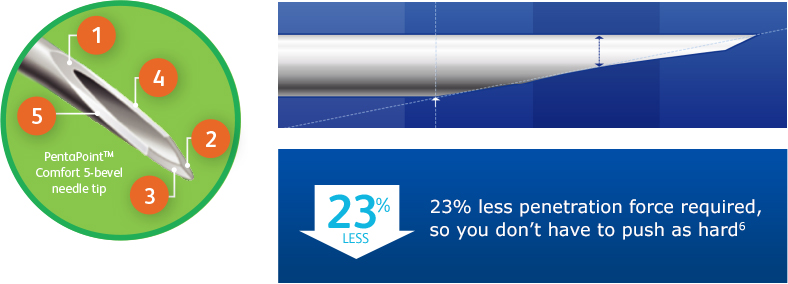
Standard pen needles have 3 bevels (or cuts) on them. BD Nano™ 4mm Pen Needles have exclusive 5-bevel technology. This makes the needle tip thinner and flatter for a smoother and more comfortable injection.6
BD Nano™ 4mm Pen Needles have Extra Thin Wall technology, which means that the inside of the needle has been made wider. This allows for a freer flow of insulin and less thumb force when performing your injection.5
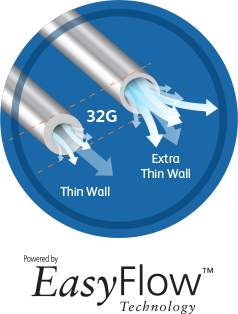
Watch more
Is the BD Nano™ Pen Needle comfortable?
The right fit for your pen
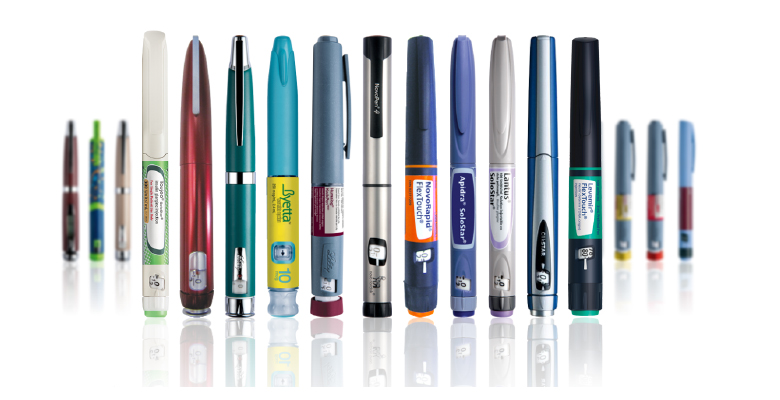
BD Nano™ 4mm Pen Needles are compatible with all leading insulin and GLP-1 pens in Canada.¶
§ Based on 2016 IMS Brogan data.
¶ As of December 2015.
Brands are property of their respective owners.


